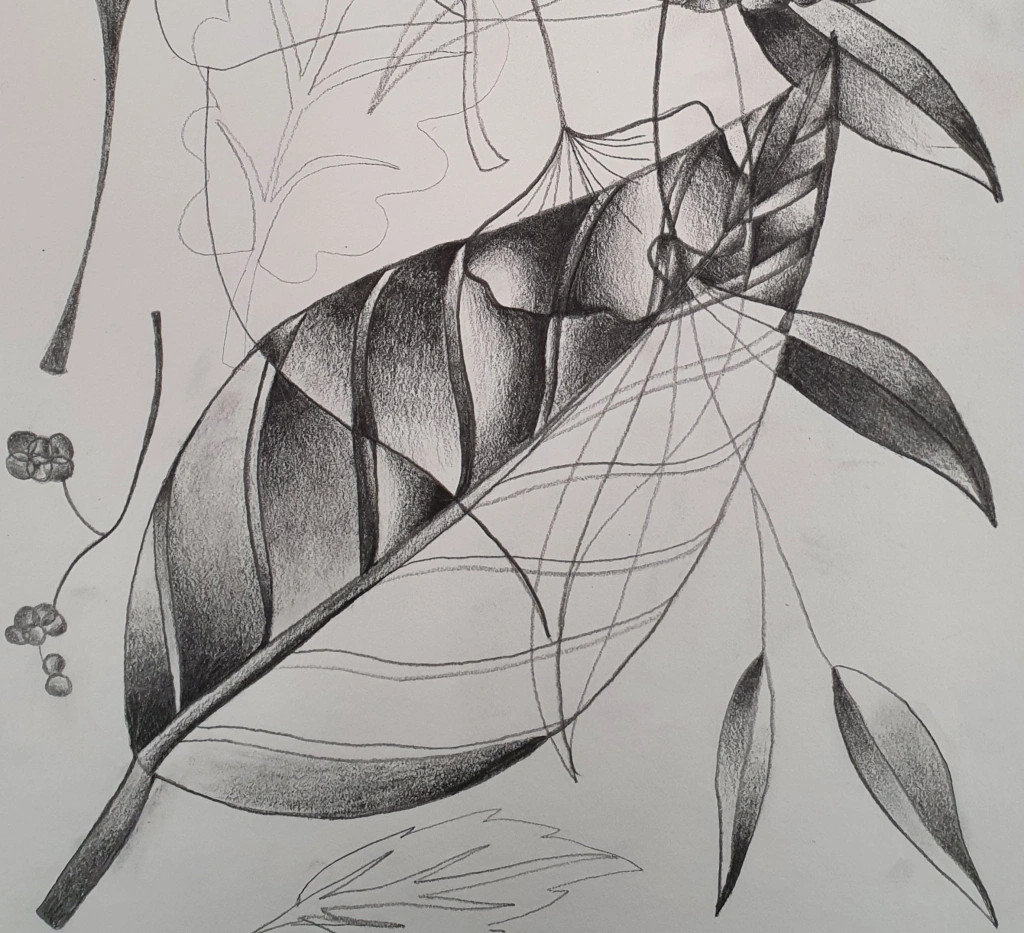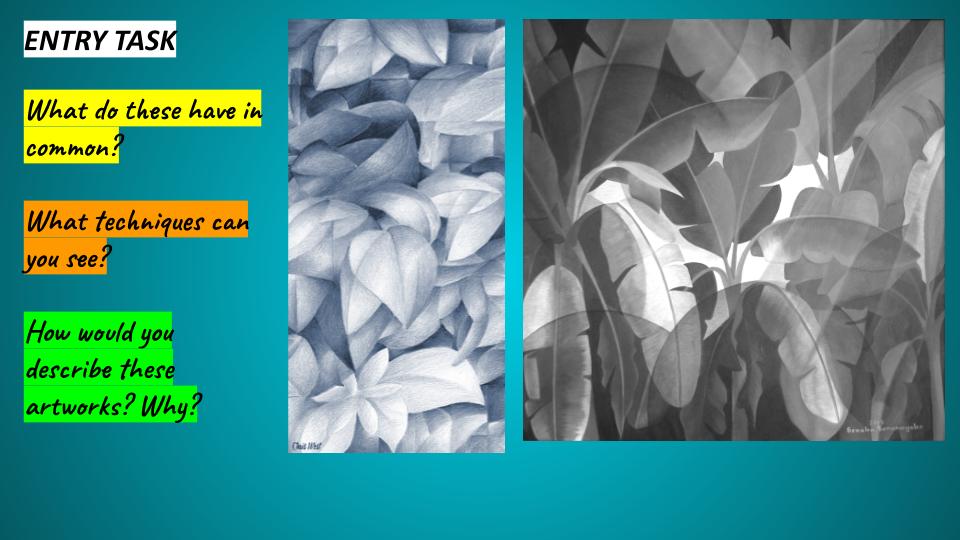I’m really excited to share this easy oil pastel art project because I have only just finished teaching it and the students have created some really wonderful work – I love their final pieces! (Although I do feel like I’m getting a bit obsessed with teaching Cubist inspired art lessons 😂 )
I was struggling to find simple but effective oil pastel ideas (other than sgraffito) and I wanted something that could teach oil pastel techniques whilst also covering elements of colour theory, so I thought about this Cubism project and based it on plants and flowers (Flora and Fauna).
Get the full Cubism project for £3
Instantly download the full Cubism project when you pay and log in.
I wanted to design an art project that was inspired by the natural beauty and shape of plants, leaves and flowers, but didn’t want students to just copy photographs or end up with a scientific style ‘realistic’ final piece. Despite teaching it through numerous lockdowns and with students being absent / isolating for extended periods at different times of the year (the joys!) I am really happy with the artworks students have created and they have responded very positively to the different tasks each week. Plus I love using oil pastels.
We started the Cubism project by understanding some Cubist techniques and students applied these to their own work. Before they started working in oil pastels, they created ‘drafts’ or working drawings in their sketchbooks. I just completed these in pencil – I know my students are confident in pencil and wanted them to be comfortable using the various elements of Cubism in their work.
All of my art lessons have starter / entry tasks – here are some examples from the beginning of the project which asked students to identify Cubist features and give some context to their artwork.
I also differentiated the outcomes for students to ensure all of them could meet at least ‘Good‘ in their drawing work. If students worked at a ‘Good’ level, I challenged them to move up to ‘Better‘, then ‘Best‘. My art students worked in their sketchbooks for this part of the scheme of work, so their drawings were A4 size.
Get the full oil pastel art project on Tes here OR on TeachersPayTeachers here.
Next, I introduced shading and the importance of tonal values in their artwork. I would come back to this later once students started working on their final pieces in oil pastel – I mainly just wanted them to understand how a full range of tones can make give their artwork more depth.
To make these shading lessons more challenging, I asked the students to consider the Cubist technique of showing different viewpoints, so to think about light and perspective and how they could achieve this in their artwork. The students aimed to treat each individual shape on their drawing as separate, then added shading / tones to each section and in different directions.

The outcomes from this part of the scheme of learning were excellent! You could easily change the materials from using pencil to another medium (even coloured pencils) if that’s what your art students are more confident with. I added a challenge for some students to work in pen if they were ahead.



Next up I started to focus on introducing colour theory- I was really pleased to come across a fantastic artist called Mary Swanzy, her Cubism artwork is beautiful and absolutely perfect for this project!
I included an artist research lesson here so my students could be inspired by Swanzy’s wonderful artwork. In the scheme of work presentation I have included an artist research hand-out you can easily print and use in your lessons.
I have shared a full list of landscape artists here – enjoy!

To make develop student confidence in oil pastels and introduce easy techniques, I added a couple of mini, low stakes tasks where students could practise before starting on their final pieces.
To stop the next steps being too overwhelming and overcome the ‘blank page fear’, I differentiated the outcomes and explained that if students made any mistakes they would be able to fix them later on. I had students work directly onto coloured A3 sugar paper with a light / white oil pastel. I had some students draw from direct observation (I took in leaves and flowers) then also gave out handouts for students who needed simpler shapes to draw. Looking back on this, some students struggled with the A3 size so in future I will give them an option for the size they work at.




As this oil pastel art project moved forward, I started introducing slightly more challenging techniques (using black and white for shadows and highlights, using a flat, pointed end of the pastel for neat edges etc.) Each time I introduced something, I had students practise on the back of their work.
I have shared other art projects for teaching colour theory here – enjoy!
Overall I think this art project has lasted for around 8 weeks (hard to gage with so many disruptions this year!) and I taught it to Year 9 students who have 2 hours of art per week. I broke up lessons with mini-tasks, self and peer assessments etc. I am going to extend the project to become more textiles based next (re-drawing their work onto fabric, painting then stitching) so it could easily be used as a GCSE art / textiles project too if you wanted to try that.
Here are some of the final outcomes by my students – a mixed ability Year 9 class, what do you think? Have you taught any successful oil pastel art projects? Let me know in the comments 🙂






Get the full oil pastel art project on Tes here OR TeachersPayTeachers here






Love it, thanks for sharing
LikeLiked by 1 person
Wow!! Beautiful work! Thank you for sharing! In which grade did you do this lesson? Sorry if I overlooked it!
LikeLiked by 2 people
Thanks! I was really happy with the work. Students were Y9, so 13-14yrs.
LikeLike
I wanted to try it with my individual summer student who finished 8th grade but we never got to it unfortunately
LikeLike
I’m not an art teacher, but I love the work you do with your students. Sometimes it sparks an idea for my own work in fiber arts.
LikeLike
Oh thanks, that’s so nice to hear. Glad I could provide some inspiration 😊 your stitching looks lovely.
LikeLiked by 1 person
Really wonderful to see. Thank you for sharing.
LikeLiked by 1 person
😊
LikeLike
This is great have you tried the same cubist work with a different theme? We are doing water and think it would great for that
LikeLiked by 1 person
Hi, yes I did another cubism project based on plants and flowers here: https://theartteacher.net/2021/05/03/ks3-oil-pastel-cubism-art-project it had some beautiful results!
LikeLike